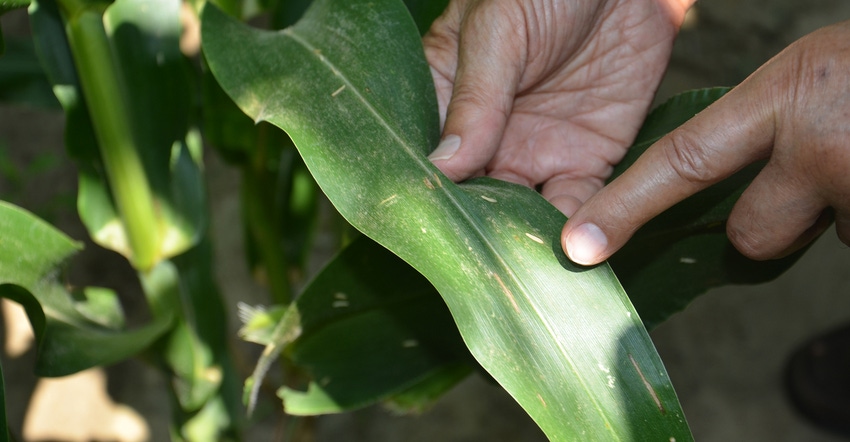
Deciding whether to apply a fungicide on corn is important. However, choices you make after deciding to use a fungicide will likely determine if you get the most possible return.
That’s how Nick Dame approaches fungicide questions. Dame is U.S. product manager for fungicides for Corteva Agriscience. He addresses fungicide basics:
How do you decide if you should apply a fungicide on corn? Approach it on a case-by-case basis. Ask yourself several questions: What is the field history? Have you had disease issues there before? Is the hybrid you planted susceptible? What are projected weather patterns?
Inoculum for diseases like gray leaf spot and northern corn leaf blight will be in the field if you’ve grown corn within the past two years. If it’s corn after corn, expect more inoculum. If it’s minimum tillage, there may be more inoculum waiting for the right environmental conditions than in conventional tillage.
How does scouting factor in? Scouting is critical. Once you see lesions on leaves, you can figure the infection occurred three to four days earlier. So, you know it’s in the field. Continue scouting on a regular basis. Notice where lesions are on the plant. The goal is to protect the ear leaf and all leaves above it.
Even if you planted hybrids with good resistance, scout to know what’s happening in the field. A hybrid may have good resistance to one disease but not to all foliar diseases.
How should you time a midseason application? Optimal timing is typically from the VT, or tasseling, stage through the R2 stage. This is where you will see the most benefit from foliar fungicides during the reproductive period.
Fungicide applications with certain surfactants aren’t recommended from V8 to the VT stage. You want to avoid any risk of arrested ear syndrome. After the VT stage, it’s OK to include surfactants, which may improve coverage. Check product labels.
If you wait too late to apply, university studies indicate you may not see as much benefit from the application. Fungicides typically only last for about three weeks, so if you apply too early, disease may come in later and still infect leaves.
Are there times when you may need to spray more than once? Yes. It’s most likely with tar spot, which tends to come in later, or with southern rust, if it is blown up from the Gulf on a late storm at the end of August or early September. Losses from those diseases can be significant if left unchecked.
How do you select fungicides? There are two basic classes: strobilurins and triazoles. The strobilurins provide more preventive protection before disease occurs, and triazoles have more curative effect. Look at the active ingredients listed on the label for products you’re considering. Make sure the product has good efficacy against the diseases you’ve identified in your fields.
There are many choices in this space. Corteva offers Aproach, which is straight stobilurin, often sprayed earlier in the season, and Aproach Prima, with triazole added, which is well-suited for VT to R2 timing.
Always use recommended rates of products. For Aproach Prima, it’s 6.8 fluid ounces per acre when applied at the VT to R2 stage. Learn more about Corteva products at aproachprima.corteva.us.
About the Author(s)
You May Also Like




